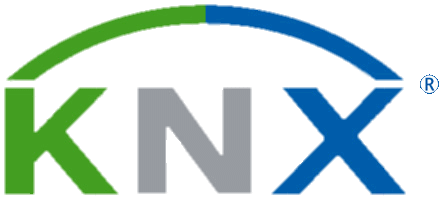
Reasons Why We Joined

BACnet International is committed to encouraging and facilitating the application of BACnet to achieve open, interoperable building automation systems. BACnet supports the ongoing convergence of OT and IT with multiple IP-based networking options to meet the needs of the full range of commercial building and campus control and automation systems. BACnet/IP and BACnet IPv6 are widely deployed globally as integration solutions for building automation. BACnet/SC (Secure Connect) is a new addition to the standard that provides a secure, encrypted BACnet solution for applications requiring enhanced network security. Building on BACnet/SC, the BACnet community is developing additional cybersecurity capabilities to enable further advances in building systems security. All of these BACnet options utilize IP to align with IT systems and coexist with other network protocols on IT infrastructure. To ensure interoperability, BACnet International administers a global product certification program and maintains a global listing of tested products.

The Connectivity Standards Alliance (CSA) is the foundation and future of the Internet of Things. The Alliance’s wide ranging and diverse membership, robust certification programs, and full suite of open IoT solutions are leading the movement toward a more intuitive, imaginative, and useful world. We believe that all objects can and should easily work together, enhancing all our lives, no matter where we are or what we do.
As the IoT continues to evolve, addressing diverse market needs and experiences. Related technology adoption and product life cycles are similarly varied, across multiple use cases and industries.
CSA supports the collaboration and efforts of IP-BLiS to better align commercial buildings with users' connectivity needs to improve the integration of smart building products over IP.

As an open, global consortium of lighting companies, the DALI Alliance drives the growth of lighting-control solutions based on the internationally standardized Digital Addressable Lighting Interface (DALI) protocol. We operate certification programs to increase market confidence in cross-vendor device interoperability.
As lighting continues to evolve and converge with the IoT, we are developing wireless and IP-based connectivity solutions, known as DALI+, to complement the well-established and widely-deployed version of DALI that connects devices with a pair of wires.
DALI+ uses IP-based and/or wireless carriers to transport the DALI commands, while offering the same DALI lighting-control features as wired DALI options. The first DALI+ over IP certification program will use Thread as the underlying carrier. DALI+ with Thread will provide the ability to seamlessly connect DALI devices with building automation systems and share analytical data on the building IP network, in line with the vision of IP-BLiS.

IPBLiS is important for us because, in KNX, we believe that by joining forces with other organisations from our industry, we all will be able to transmit the common future oriented vision of IPBLiS, i.e. to converge towards using the same transport and the same security mechanisms for building automation, regardless of the diversity of the application layer protocols or the different approaches of the other ecosystems. All of this to the benefit of the building owner.
Thanks to IPBLiS, together, we can with one voice represent all manufactures active in our associations and the building automation domain.
As KNX we also joined IPBLiS as one of the founding organizations to provide as much as possible active support to spread the IPBLiS message towards our own KNX community of more than 500 manufacturers from over 50 countries.
KNX joined IPBLiS because we are in the process of developing the extension to the current KNX Technology, called “ KNX IoT“, to connect KNX even better to the IoT world. This KNX IoT solution will be fully inline with the IPBLiS vision.
We are sure this marketing initiative is the right approach towards ensuring that IP becomes the Secure Backbone for Building Automation.
The Open Connectivity Foundation (OCF) is a global, member-driven technical standards development organization. Its 500+ members are working to enable trust, interoperability and secure communication between IP-connected IoT devices and services. It does this by fostering collaboration between stakeholders across the IoT ecosystem to deliver the freely-available ISO/IEC specifications, including the Secure IP Device Framework, its open-source reference implementation, and an industry-recognized certification program. This enables innovative new secure use cases and user experiences, reduces development costs, integration complexity and time to market, and simplifies regulatory compliance to IoT security and privacy baselines.
In line with the vision of IP-BLiS, OCF members collaborate across the enterprise layers of infrastructure, applications and data to co-create and deploy systems in an open and standardized way. This enables devices to securely communicate over IP, regardless of form factor, operating system, service provider, transport technology or ecosystem.
The vertical-agnostic technology is now enabling the transition to secure, intelligent Building Automation Systems (BAS) based on IP connectivity networks.

Formed in 2013, Thread Group is dedicated to making Thread the foundation for the internet of things in commercial buildings and promoting a secure, multi-standard IP-based IoT solution. Thread is an open standard for wireless communication designed for easy integration in enterprise networks and to reliably and securely connect thousands of wireless Internet of Things or IoT devices in commercial buildings, enabling smart building automation.
Thread is based on IPv6 (the Internet Protocol), making it the only wireless, low power, mesh networking technology that seamlessly integrates into an enterprise network while ensuring network security by using end-to-end encryption from the cloud to an individual device. Neither hubs nor gateways are needed to translate traffic when connecting to an IP-based building management system or cloud service, thereby eliminating possible security risks or single points of failure.
Thread serves as the low power wireless networking technology for the application ecosystems participating in IP-BLiS. Our vision for IoT in commercial buildings aligns well with IP-BLiS’ goals to promote crucial standards that smart buildings need to improve interoperability and reduce costs, improving the efficiency, functionality, automation and safety of smart buildings.
